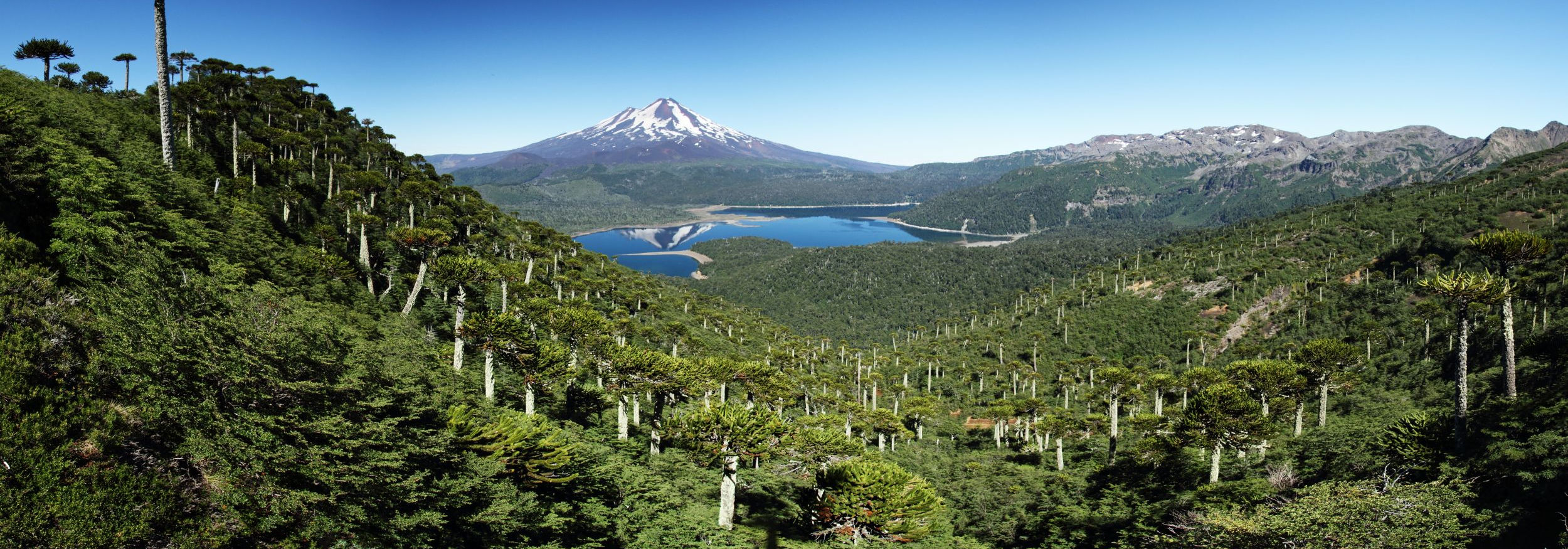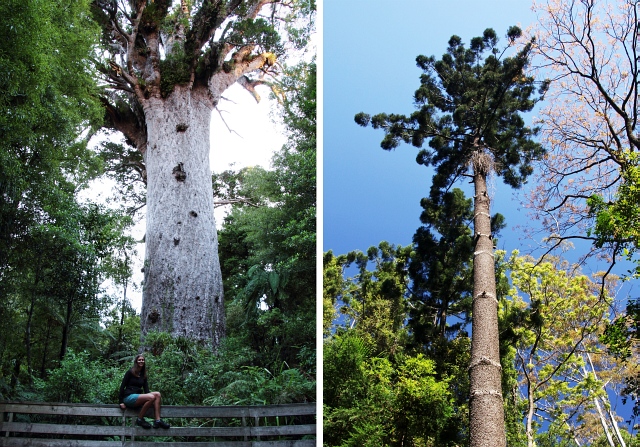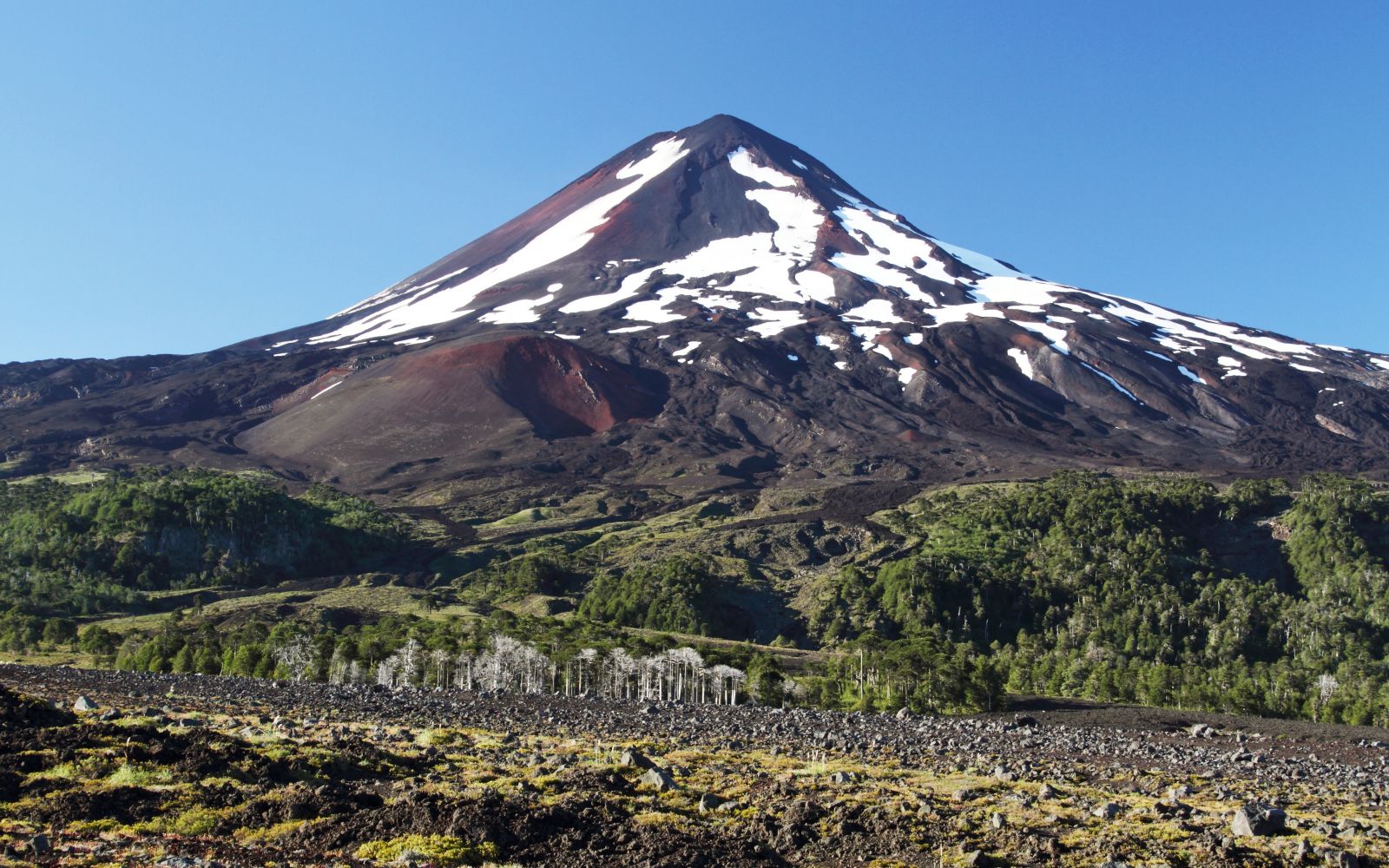

The Conguillío National Park extends around the active, 3125 m high stratovolcano Llaima, whose eruptions have left their traces: the volcano reflects in in the clear waters of the Lago Conguillío, which was once impounded by a lava flow. The Llaima is an integral part of a mountain landscape dominated by southern beech forests: the evergreen coihue Nothofagus dombeyi grows at lower elevation whereas the deciduous lenga Nothofagus pumilio is omnipresent near the treeline area. However, the attention of most visitors is caught by another tree: primeval Chilean araucarias or monkey puzzle trees Araucaria araucana stand out of the southern beech forests like umbrellas, lending the landscape a very special character. The park can be reached from Curacautín or Melipeuco by car, and can be explored by foot on several trails. The ascent to the slopes of the Sierra Nevada is recommended in particular.
Click into the title image to view the national park from another perspective.























